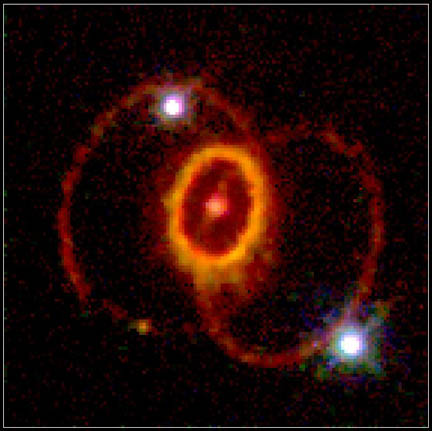A supernova explosion sends a powerful pulse of electromagnetic radiation (including visible light and x-rays) that travels at the speed of light plus a huge shock wave that blasts into the surrounding region at a much slower speed.
The Hubble image above shows three parallel rings: an inner bright ring surrounding the supernova (central pinkish spot) and outer thinner rings in front of and behind the supernova. The two white points are stars that happen to be in our line of sight. The rings are material lit up by the intense pulse of electromagnetic radiation. The inner ring is made of material shed by the star in its red giant phase. Because electromagnetic radiation travels so much faster than the ejected matter, it rapidly catches up with material ejected even many thousands of years ago. The origin of the outer thin rings is uncertain, but they may also be material ejected during red giant outbursts. When Eta Carinae finally explodes, a pulse of electromagnetic radiation will also illuminate the debris shed during its red giant phase.
Image credit: Hubble Space Telescope; The main source for HST images and explanations is HubbleSite.org.
|

